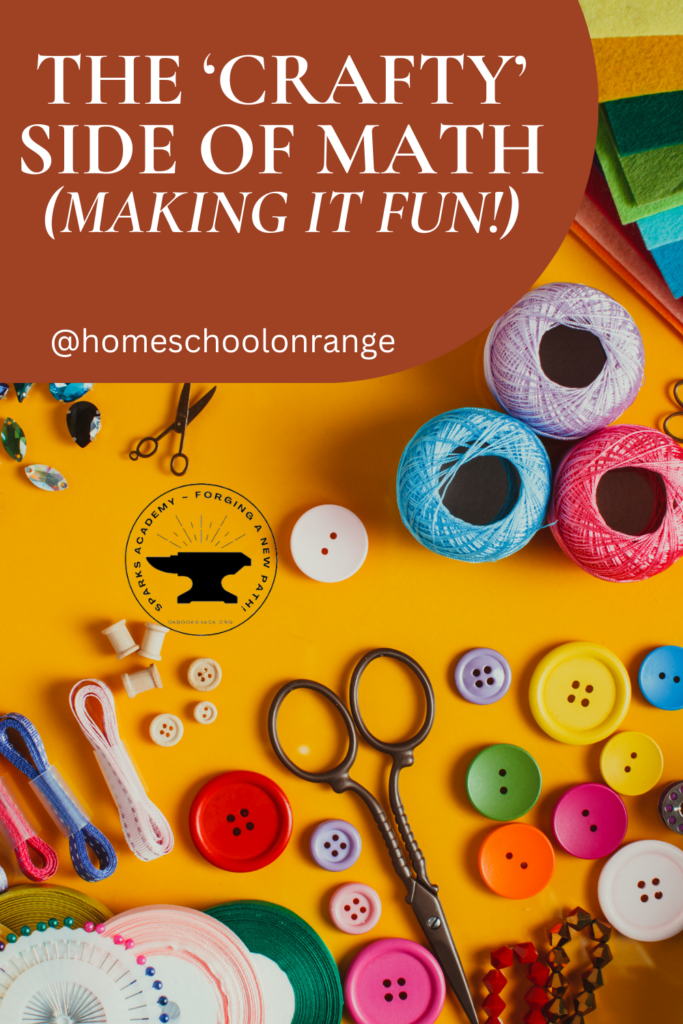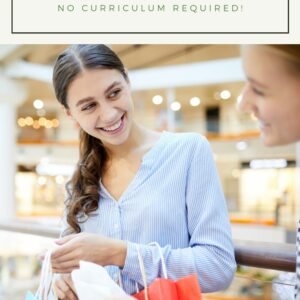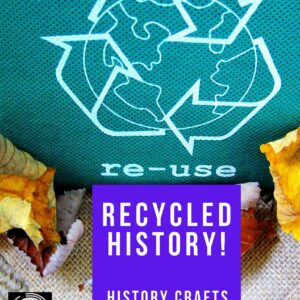
We hear a lot about living books and how these are used to foster a love of both reading and learning in children, but what about living math?
Living math is real-world applicable and can include things like balancing a checkbook, altering a recipe, comparing prices, building a treehouse, making change for a customer, or calculating square footage. It can also be more playful, such as using math for arts or crafts.
As with living books, students are more apt to retain principles when they are tied together with other ideas and subjects. If your student is working on a fun project and comes across the need for a particular math principle, they learn it and incorporate it with that creativity, and that’s where the magic sticking point comes into play.
Living Math in Action
Our son began his work at the tender age of five. His earliest works, all made of cardboard and duct tape, were crude adaptations of Greco-Roman armor that he had seen in picture books. Fast-forwarding, he learned how to use the internet to look up pictures of other, more specified, types of armor and added aluminum foil and basic sewn pieces into the mix.
Through the creative process, he was also learning how to measure, how to calculate said measurements for fitting, and how to size things up or down to scale….all math principles, and all to a kid who abhors math. (Seriously y’all, I don’t think I have a single ‘bad homeschool day’ story for this kid that didn’t begin with math.)
Today, he does welding and metalwork, creating full-scale arms and armor from scratch and to historic standards. He does the research, creates the pieces, and then gives it a personalized flair. He does so many calculations for every single one of these pieces, but since the math has a purpose and application, he says that it doesn’t feel like math to him. If you have a budding artist, chef, or builder, you will probably see the same trend as well…play to it!!
Today, he’s learning entrepreneurship along with his creative math skills, where at Sparks Forge & Armory, he creates beautiful, accurate, and detailed historical reproduction crossbows, scabbards, swords, daggers, maille (chainmail), armor, and other medieval artifacts. Each piece is handmade and unique!
You can see many of his patterns and early work at Cullowhee Creates, a website / blog he started as a portfolio. Unbeknownst to him, he was also learning organization, cataloging, and basic HTML as well!
For an even more basic start on patterns and creating hands-on costume projects, check out Recycled History. All projects are created with items found around the house….many that would be headed for the trash bin….and the book includes directions and photo-directions. Projects are history-based, and span from ancient civilizations to modern times. They are designed to get kids excited about learning, and include sculpture, costumes, flat art, woodworking, and more!
Right-Brained Kids and Math
Boys of our boys are right-brained learners when it comes to math, which made it very difficult for this left-brained mama to adjust to teaching. However, rather than teaching math facts using pencil and paper and sterile problems, we had to find out what each kid really likes and relate math to that. For example, our other boy loves shopping, so we decided to teach him how to use money while shopping, and then work with him as he saved up for something special.
Hands-on learning and movement are very important to right-brained learning, especially when it comes to math. Manipulatives are your friend here! There are so many manipulatives available for elementary school, but fewer for the upper grades. Here are some of the best hands-on resources we’ve discovered and loved:
- Coordinate Board – This oversized dry-erase board is perfect for students in pre-algebra, algebra, and geometry who need to master coordinates and use them for linear equations and geometric functions.
- Beautiful Discovery – These boxes help students to learn math, art, science & code, in a beautiful way, deCODING nature’s patterns. Each one includes natural wonders & all you need to model them with art, math, and code. Each month’s box has a webpage full of videos and interactive models to help students discover deep patterns & beautiful math underlying nature’s diversity.
- Number lines – These dry-erase boards are perfect for learning to add and subtract with littles, but can help with skip counting and multi-step problems with older children. My only complaint is that there isn’t a negative numbers board, which can be butted against the positive one, as many students struggle with the concept of adding and subtracting positives and negatives. In this case, simply turn one upside down and use it for negative numbers!
- Money set – If you don’t have one already on-hand from the elementary years, it’s never too late to use a money kit to teach about borrowing and carrying, as well as to master counting change – a skill that many employers complain kids don’t know how to do today!
- Magnetic Tiles – While it’s true that they may know the basic fractions, many students struggle with adding and subtracting fractions, borrowing and carrying, and that’s what this set helps with as they visualize it, move the pieces around, and master it.
- Place Value Flip Chart – If you have a student who has mastered place value at an early age, congrats! Many students, however, don’t master this until middle school, and special needs learners may take even longer. This flip chart uses different colors to make it easier to distinguish between different place values for number manipulation (adding, etc).
- Place Value Chart – Another dry-erase board, this one goes hand in hand with the flip chart to help students with adding, subtracting, multiplying, and dividing using proper place value placement.
Incorporating Real-World Math
We make time for the things that are important, and this is no exception. If your school day is strictly planned out, with no time for creative play, you’ll find it difficult to get that hands-on experience which incorporates living math. Here are some strategies to help:
- Slow down. Build in free time each day for play, creativity, and even boredom. (Boredom breeds creativity…ask any Gen-Xer.)
- Stock up. Have the supplies on hand for creative play, be that cardboard, aluminum foil, Legos, crayons, various types of foods, or whatever your student is into.
- Step back. Allow your student to get creative without direction, criticism, or even an excessive amount of praise.
When they enjoy the project, and aren’t just completing projects in a textbook, your children will be more apt to pick up on, retain, and love the skills they are learning!
More Information
- Although it’s workbook-based, these real-world math problems are an alternative to regular textbooks and incorporate many facets of daily life. Download the book here.
- Real-World Math for Students who Ask “WHY?” For so many students, math is thought of as boring and unnecessary. They just don’t see the reason why they need to learn the material. Do you have one like my middle school student…who struggles constantly with math, and is always asking WHY?!
- Teaching Math to Visual Learners Most people have a combination of learning styles, but tend more toward one than the others. If your child prefers to draw pictures with his word problems…he might be a visual learner.


